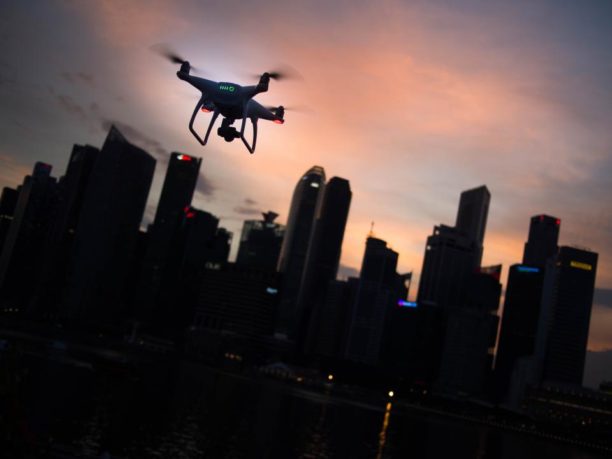Talk to any science fiction fan about drones and they’ll tell you that our favorite flying robots aren’t just useful tools in agriculture and construction. They are the inevitable agents of dystopian governments. Traditionally, drones are symbols of intimidation and oppression, spying from above and keeping the people under close watch.
But strangely enough, some recent examples are showing an unexpected side to the technology. The role has reversed. Drones are being used to subvert power and disrupt the status quo.
Gatwick Drone Disruption and Heathrow Pause
Much of the drone-related controversy has happened in London, where two airports have been targeted by protestors in an attempt to disrupt operations. At least we think there have been two incidents.
Earlier this month, Heathrow Pause, an offshoot from the Extinction Rebellion movement of environmental activists, staged multiple drone flights within the airport’s restricted airspace. The flights were all below head height using tiny toy drones, so there was never a question of a collision occurring.
The protestors were using the technology in an attempt to get arrested and raise awareness for their cause. And it worked.
The second incident, which has to go down as the drone industry’s most infamous to date, is the disruption that occurred at Gatwick airport in the lead up to Christmas 2018. We still don’t know who was responsible for air traffic at Britain’s second-busiest airport being locked down for 36 hours.
And we still don’t know for definite whether 1,000 flights and 140,000 passengers were disrupted over a huge (and rather embarrassing) game of Chinese Whispers. We can’t even be sure there was a drone.
This week, Sussex Police have confirmed that after ruling out 96 potential suspects, there are “no further realistic lines of inquiry at this time”.
The one thing we do know is that the idea of a drone was enough to cause chaos. If we ever confirm that there was someone flying into Gatwick airspace with the intention of causing disruption, a protest group of some sort would be the most likely explanation.
All of that disruption and fervour – and the fact that we are still talking about it almost a year later – make it a perfect template for direct action in the years to come.
What does it mean for the industry?
Unfortunately, many of the characteristics that make drones ideal for commercial applications also make them a potential choice for those with negative intentions.
Because they can be operated from a distance, accountability is limited and anonymity is certainly possible. Anyone can purchase an off-the-shelf drone and fly it where they shouldn’t in an effort to cause disruption or give publicity to a message.
Unless, of course, the area is protected by effective countermeasures or blocked by geofencing technology. Although there are ways around these methods for determined or sophisticated groups.
As a result, the possibilities for protesters and other rebels with a cause range from the relatively benign efforts of Heathrow Pause to unwelcome political messaging at sporting events, to apparent assassination attempts.
Negative publicity is bound to follow and it’s something the industry has done well to combat so far.
A number of stakeholders, including DJI and Altitude Angel, have been quick to defend the reputation of drone technology, whether that’s responding to irresponsible media reports or casting doubt over unverified near misses.
As ever, all we can do is keep on highlighting the positive impact drones are making, to industries, to businesses and to people’s lives.
Malek Murison is a freelance writer and editor with a passion for tech trends and innovation. He handles product reviews, major releases and keeps an eye on the enthusiast market for DroneLife.
Email Malek
Twitter:@malekmurison
Subscribe to DroneLife here.
